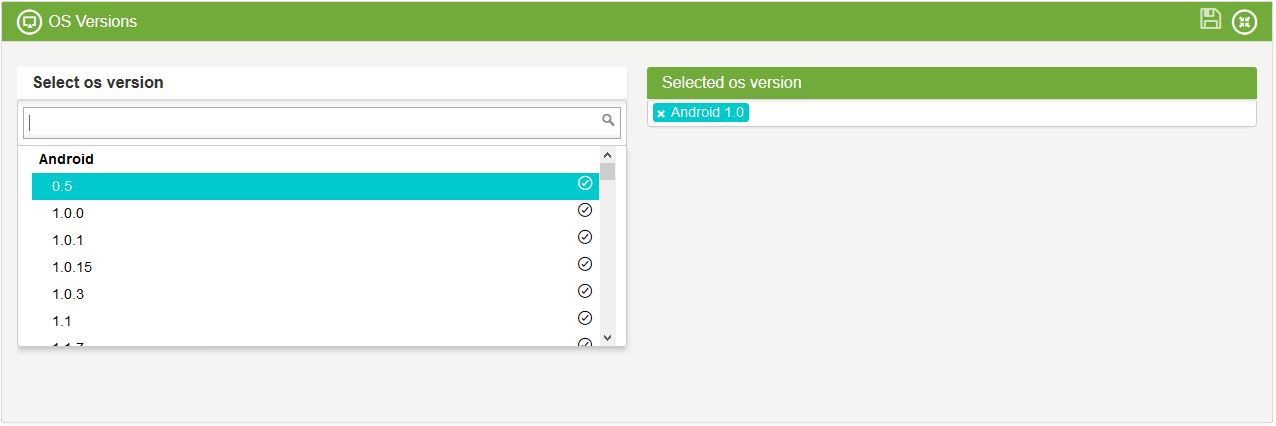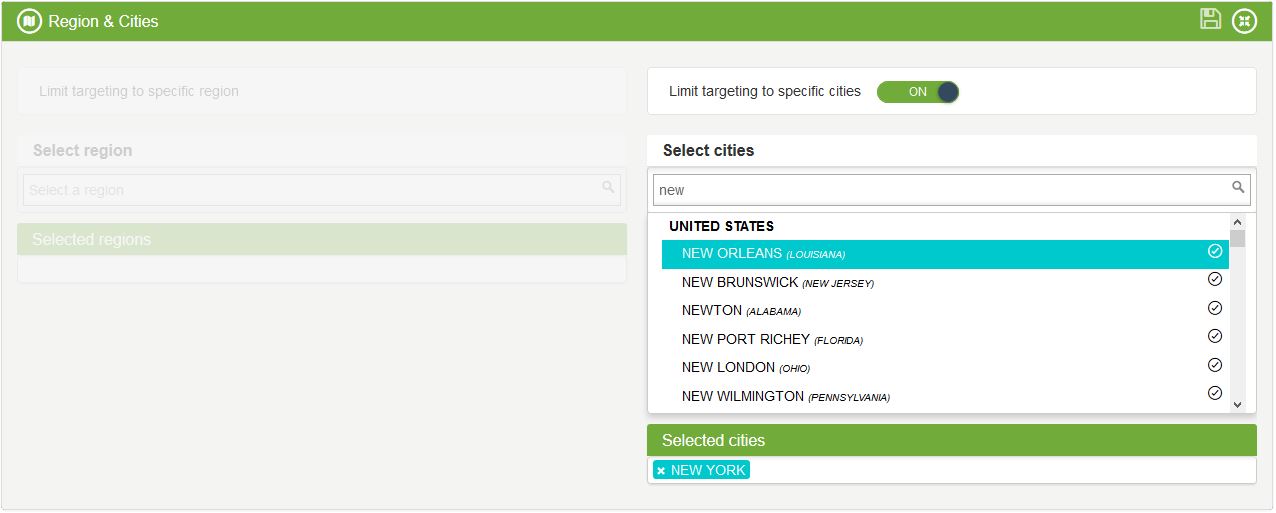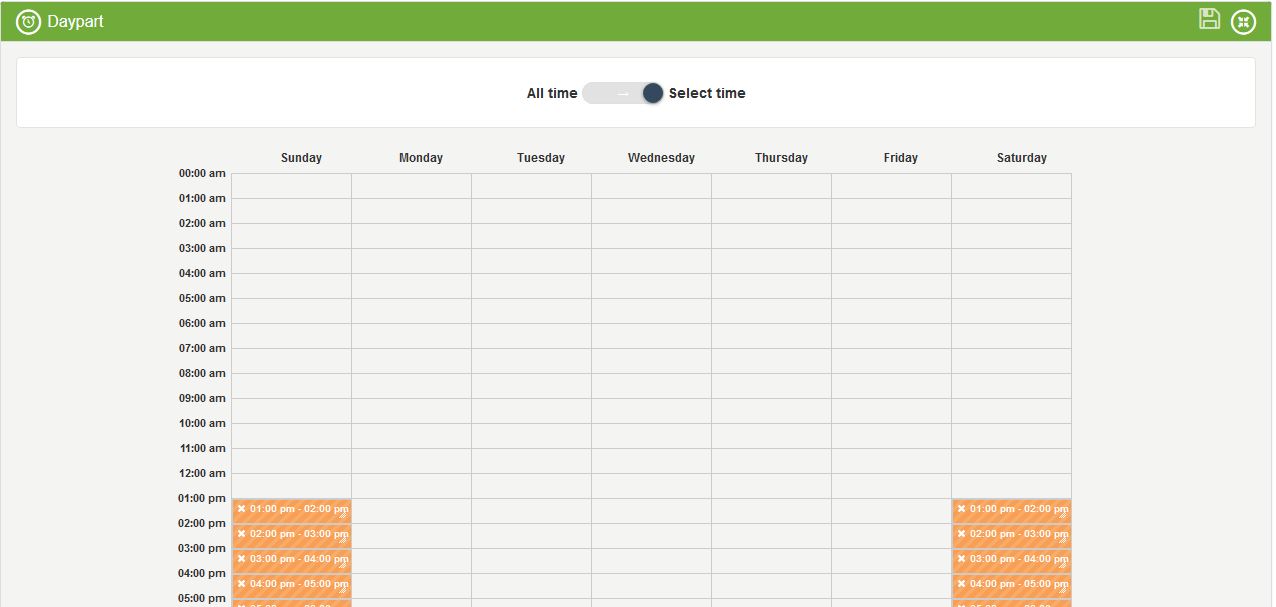Bucksense advance technology is fully scalable and flexible to meet every marketer’s requirements, from those who want to target broad audiences to the advertisers that need to apply multiple targeting parameters to reach very specific users. Advance targeting settings allow you to reach more precisely your right users where and when they are more likely to convert.
To apply Advanced Targeting parameters, select a Campaign on Campaign List (Campaign Tab) and click Advanced.
OS Versions
Versions of Operating Systems support visual interfaces differently and have varying levels of Internet functionalities. This targeting capability helps you to ensure that your creatives are compatible with your audience’s OS and select those that work better. OS Version targeting is only available for mobile campaigns.
Device Make and Model
In this section you can create white or black lists to include and exclude specific device makes or models for your mobile Campaigns. This functionality helps you to reach more precisely your users, targeting the devices more widely used by your audience and adjusting campaign optimization toward the best-performing ones.
If you want include or exclude one or more device makes, you just need to select Include or Exclude and then choose the device make(s) from the list.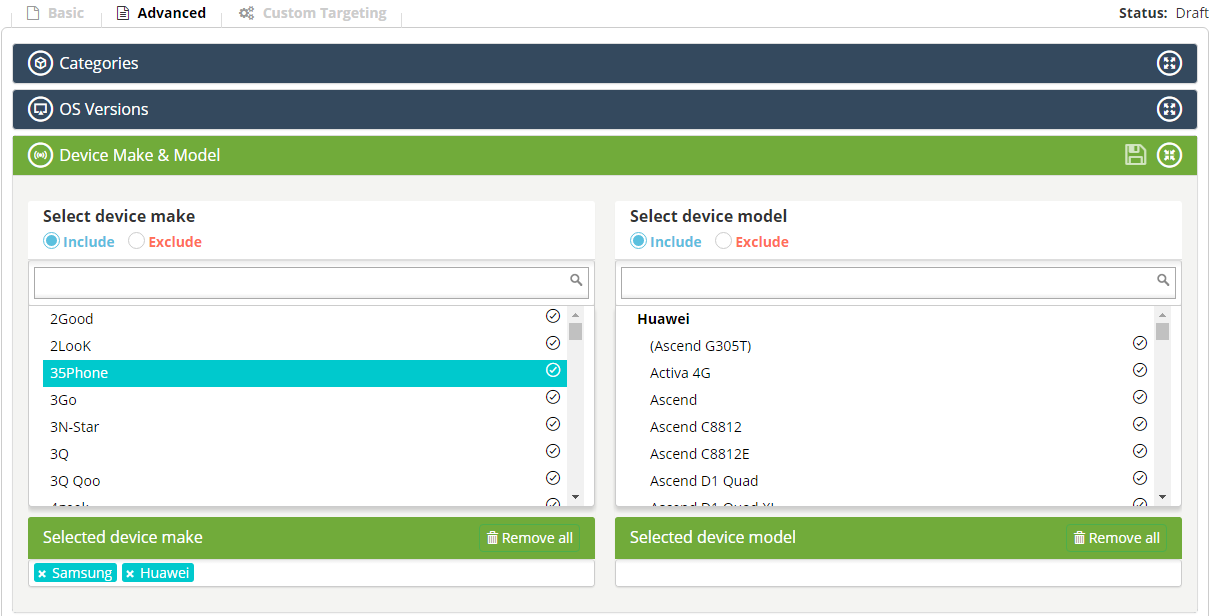
If you want to include one or more device models, but not all the devices of that device make, you need to Include first the device make and then select the device model(s).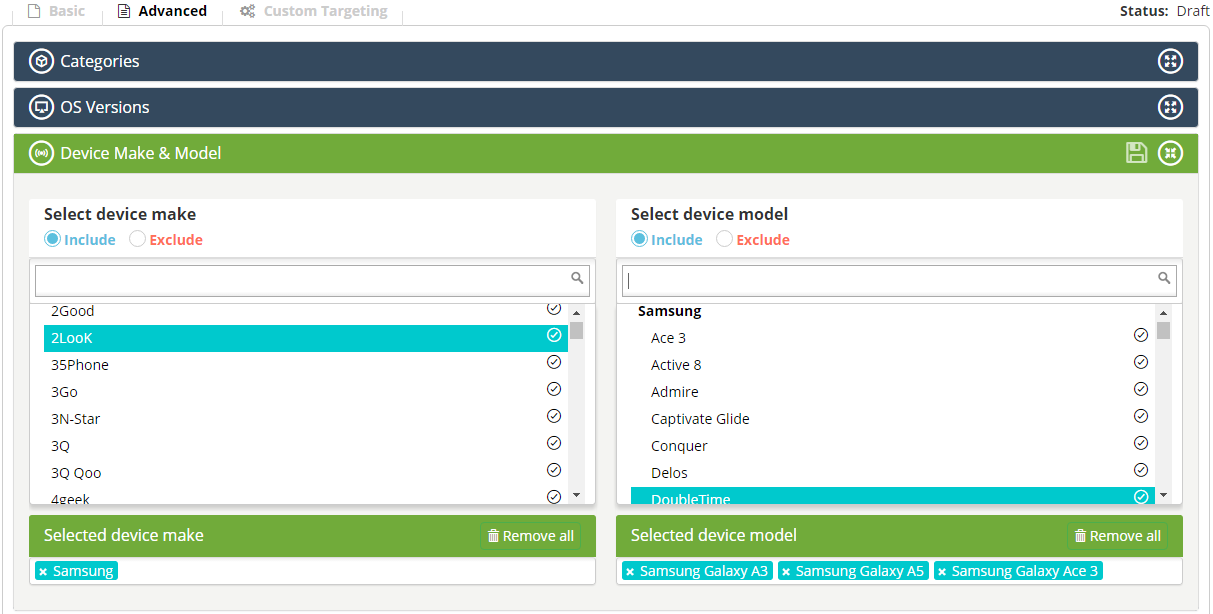
If you want to include a device make by excluding one or more device models, you need to Include that device make and then select the device model(s) to exclude.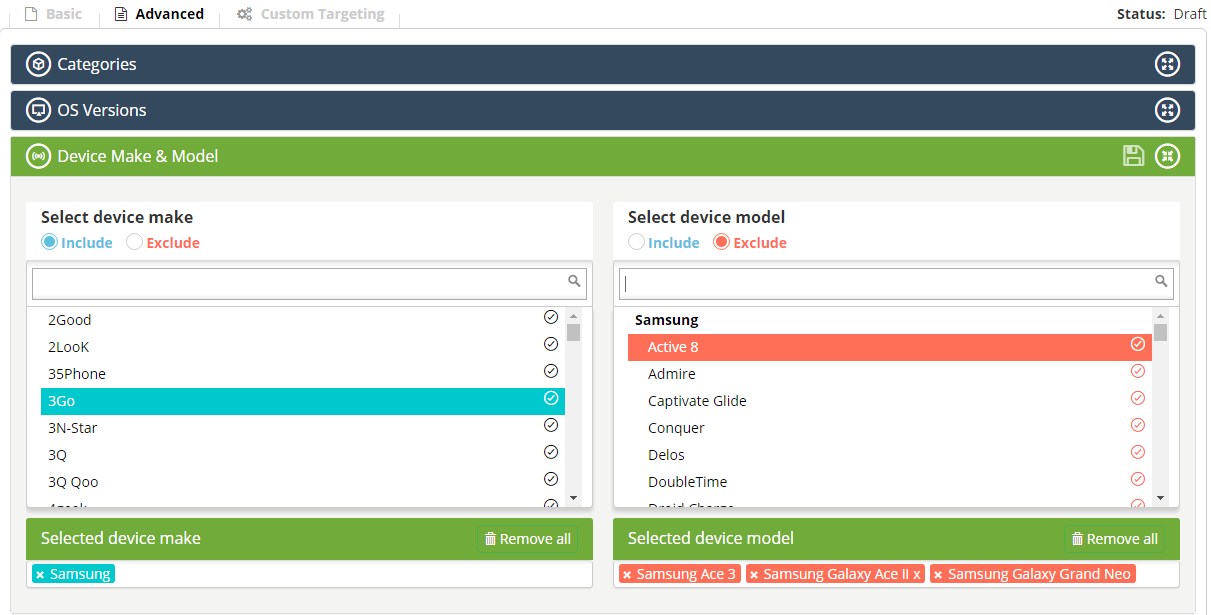
If in your mobile campaign, you want to target on all the device makes but you need to exclude one or more specific device models of different device makes, you have to Exclude the device make(s) and then select the device model(s) to exclude.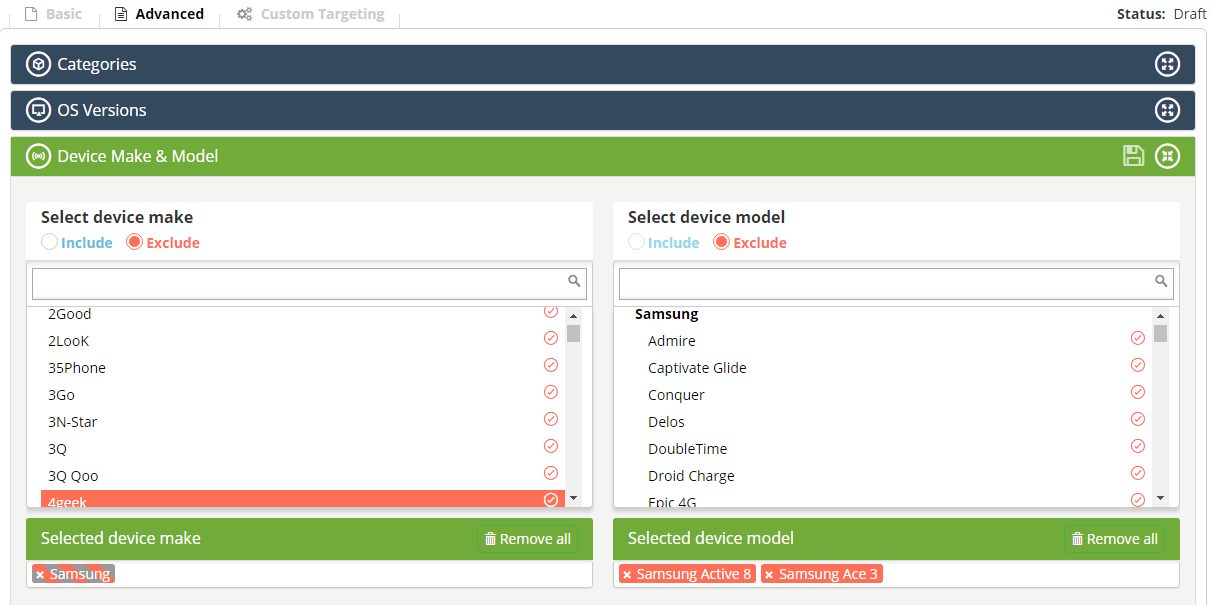
Browser & Browser Version
Browser targeting allows whitelisting and blacklisting to include or exclude specific browsers and/or browser versions. As happens with OS, browsers show visual interfaces differently and this capability enables you to make sure your creativities are fully compatible with them and target those browsers and browser versions that generate the best results.
If you want include or exclude one or more browsers, you just need to select Include or Exclude and choose the browser from the list.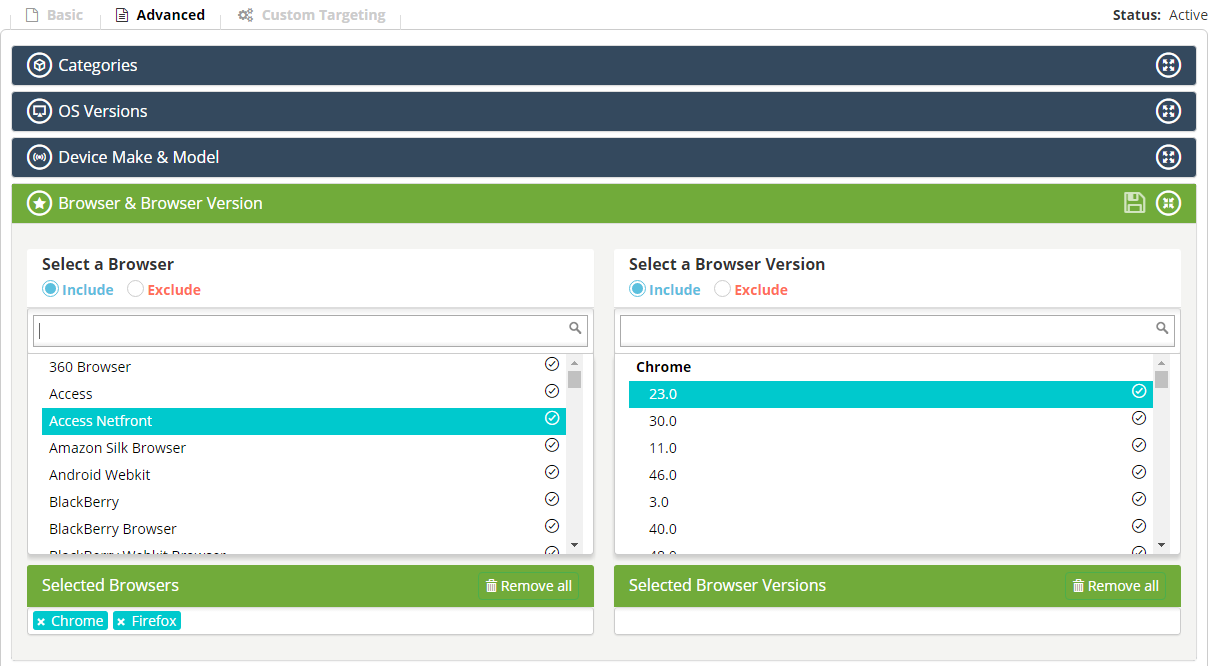
If you want to include one or more browsers, but not all the versions, you need to first select the browser and then the browser version(s) to include.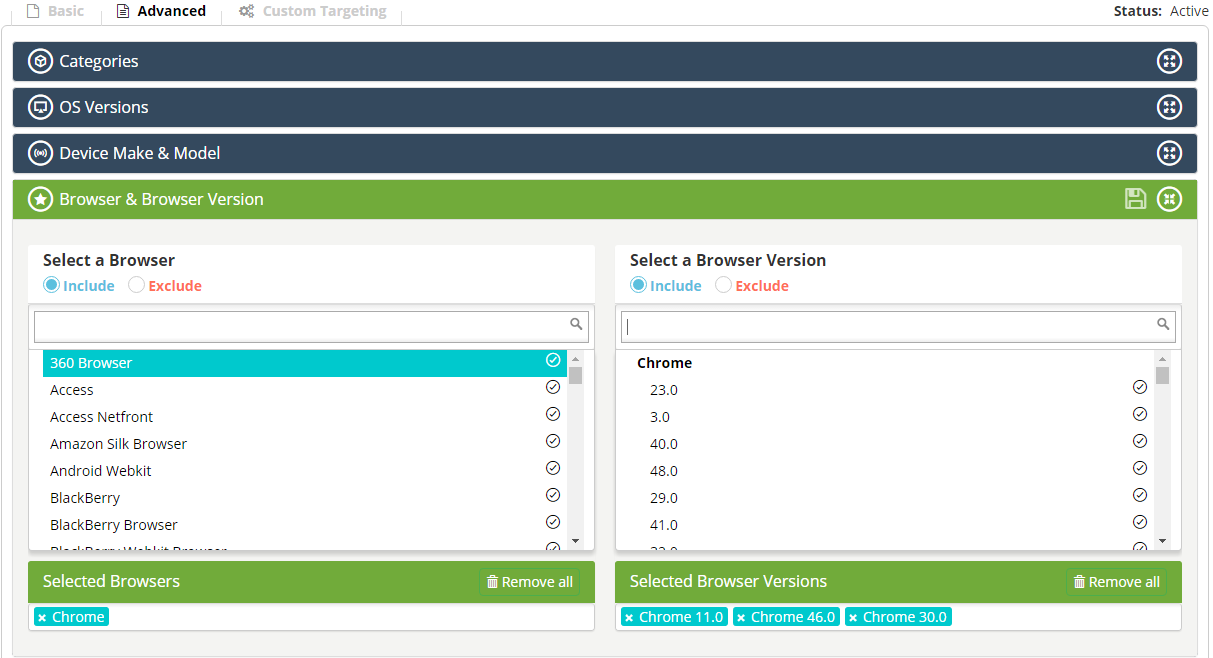
If you want to include a browser by excluding one or more browser version, you need to include that browser and then select the version(s) to exclude.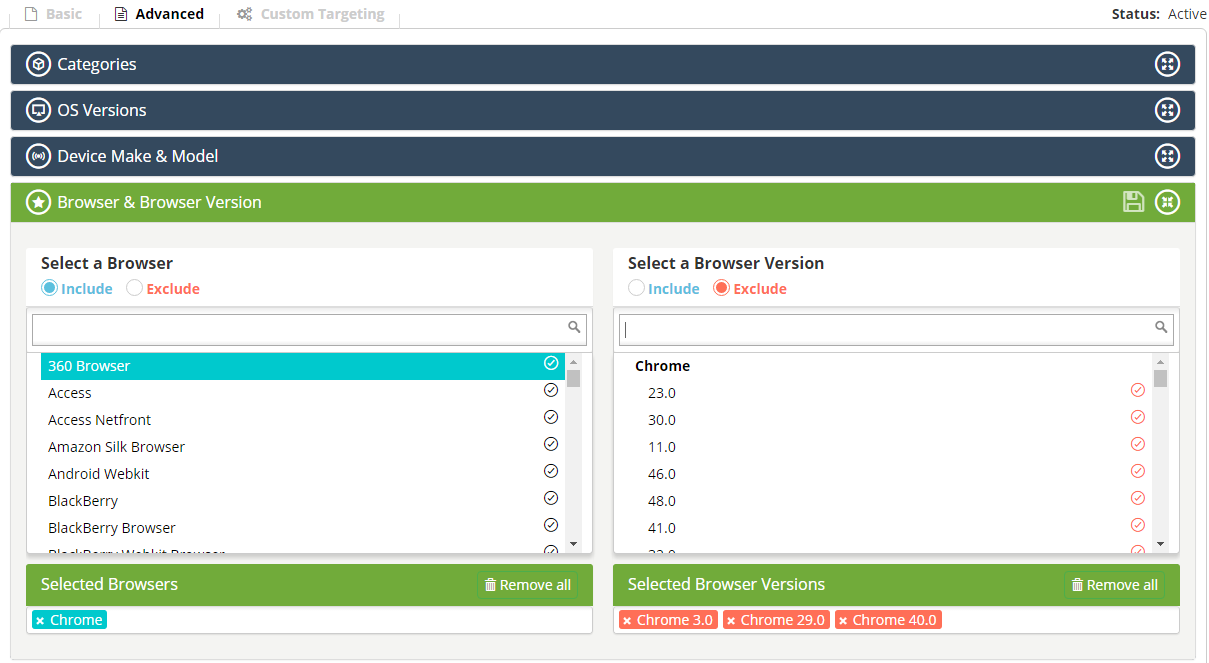
If in your mobile campaign, you want to target on all the browsers but you need to exclude one or more specific versions of different browsers, you have to select the browser(s) to exclude and then exclude the version(s).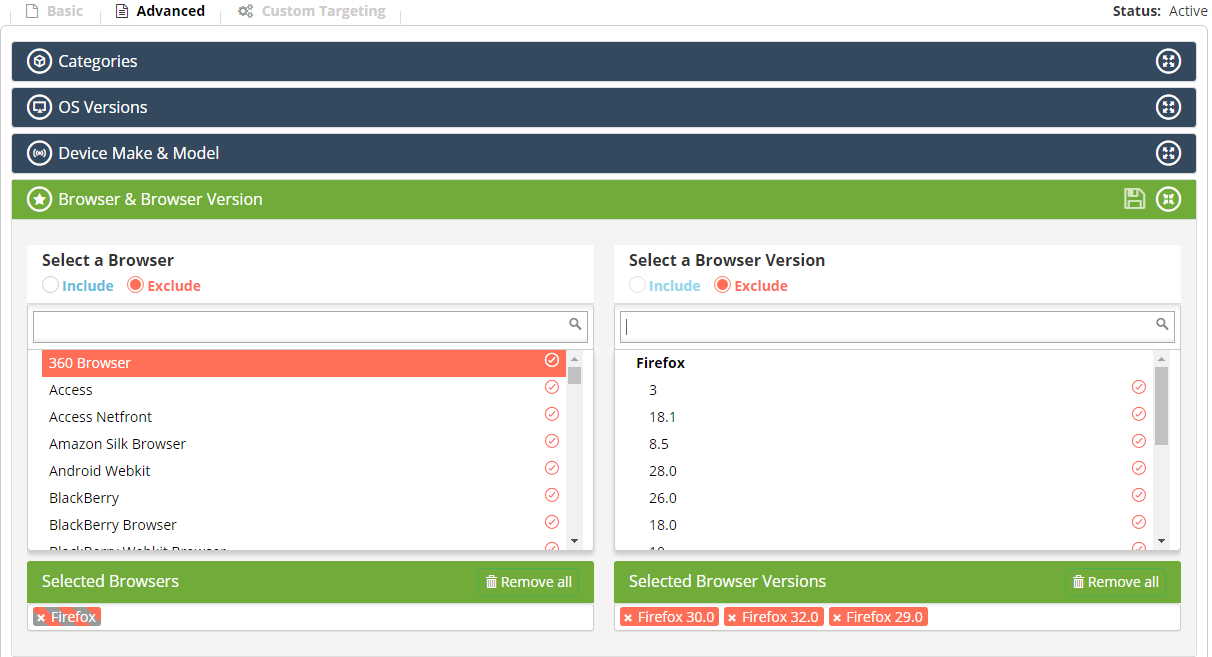
Region & Cities
In this section you can more accurately define location targeting and limit your campaign reach to specific regions or cities within the countries selected on Basic Settings. Both options cannot be selected at the same time since cities are included in Region Targeting.
Daypart
Dayparting allows you to schedule Ad delivery at the times of the day when your target audience is more likely to convert. For example, for promoting Travel Apps Saturday and Sunday afternoons and evenings are the best dayparts to get downloads, so travel marketers can schedule Saturday and Sunday from 1 pm to 9 pm to show their ads. In this way, they buy the ad impressions that are more likely to generate clicks and conversions.
Targeting specific Exchanges
See how you can specify which Exchanges you would like your campaigns run on.
Bucksense has connections to all the major ad Exchanges so that you get an extensive reach of RTB inventory.
Depending on the type of inventory you want (display, native, video, app, desktop, etc), certain exchanges will be more suitable than others. For example, some exchanges focus on display placements while others are more specific to placements such as video.
To make sure you buy the optimal impressions to reach your target, your account manager can advise on which exchanges are the most suitable. By default, your campaigns will only run on the exchanges your account manager has enabled.
If you want to enable/disable specific exchanges, you can do so in your company settings. You will need to follow the steps below each time you create a new campaign or edit an existing one:
- Enable ‘Exchange selection’
- Select the Exchange(s) you are looking to target
- Clicking on ‘Save all’ button
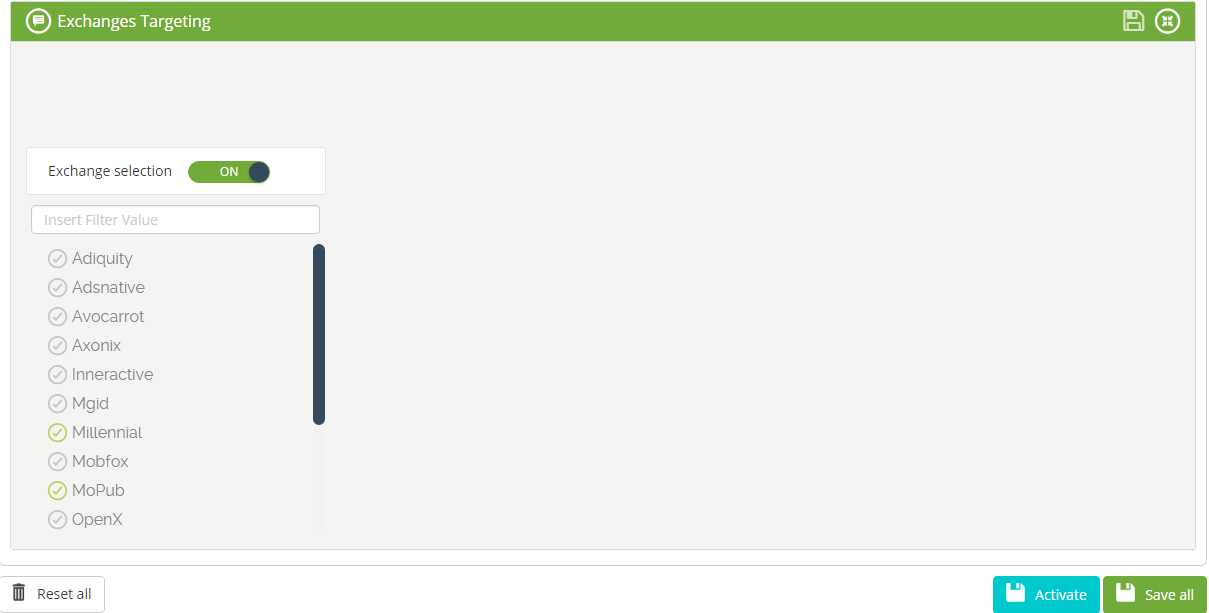
You can check the performance of the exchanges in the Acquisition Performance Report.
You just need to select ‘Exchange Name’ in the Dimensions to see the data in your report.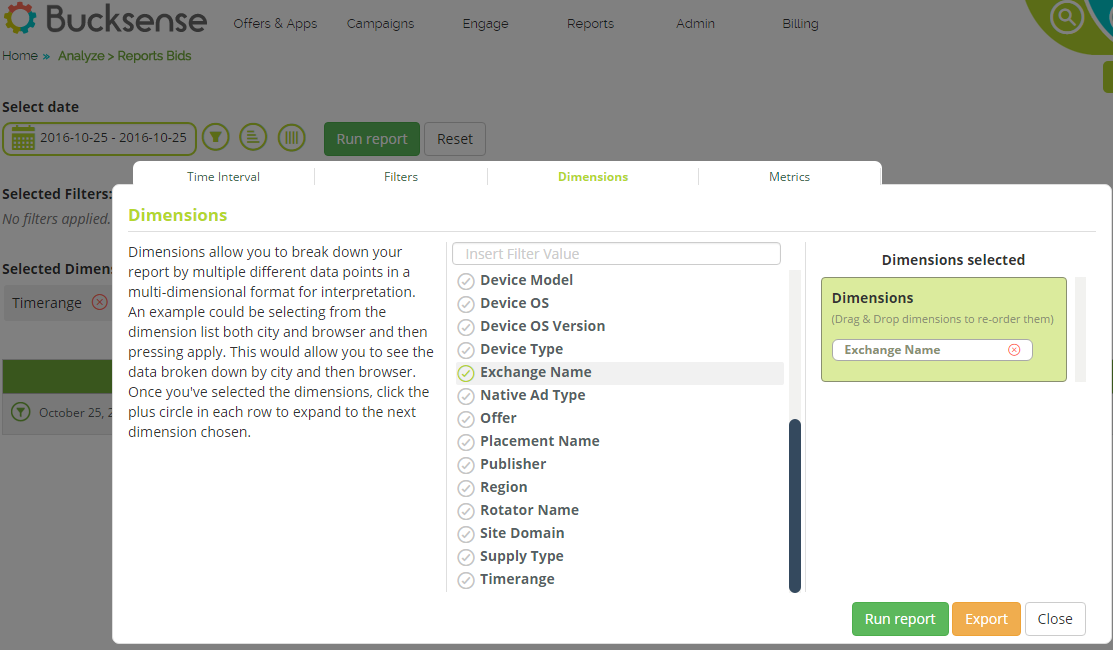
If you want check the performance of individual exchanges, click on Filters, select Exchange Id and then select the Exchange(s) whose data you want to view.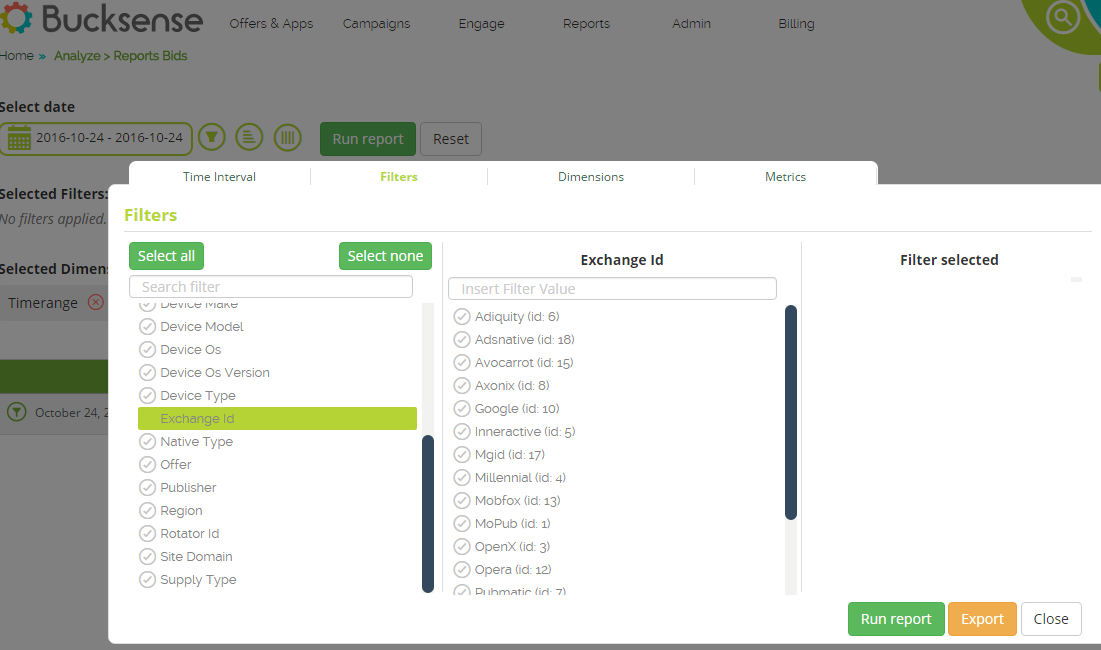
Frequency Capping
With Frequency Capping you can define the number of impressions for a unique user within a specific time range and the minimum amount of time between each impression.
Rules can be created for the following:
- Ads delivered: defines the number of impressions a single user can see (choose a value between 1 to 128)
- Timerange: set the time range in which impressions will be shown to the user (1 hour, 6 hours, 12 hours, 24 hours, 48 hours, 3 days, 1 week)
- Time between impressions: defines the minimum time between the delivery of impressions (1 minute, 2 minutes, 5 minutes, 15 minutes, 60 minutes, 1 hour, 6 hours, 12 hours, 24 hours, 48 hours, 72 hours, 1 week)
For example: if you want each unique user to see your ad 10 times within 24 hours and with a time between impressions of 1 hour, you would set this up as:
By default, Frequency Capping is set on: 4 Ads Delivered, Timerange 24 hours and Time between Impressions of 5 minutes.
Once you have set your preferences, you can save it by clicking on the Save all button or click the Activate button to start to running the campaign.
Viewability
Viewability is an online advertising metric, that tracks only the impressions that are actually seen by users. Read more here
Language Targeting
Language Targeting allows you to choose the language of the sites that you’d like your ads to appear on.
Contextual Targeting & Brand Safety
Contextual Targeting & Brand Safety audience features will help you to target toward or away from specific content pre-bid based on an analysis of the brand safety and attributes of the inventory.
This inventory analysis verifies if content is aligned with advertiser’s ads and dismisses placements that do not match it or can contain potential negative messages.
See more about this feature here
Optimization Rules
Optimization Rules allow you to create specific exceptions to your bids in order to increase impressions that are performing towards your KPI and to decrease/eliminate those that are not.
Rules can be created to optimize campaigns beyond targeting inventory that work well, identifying placements that perform but at the same time are the best cost effective to reach advertiser’s marketing goals.
Read more here
Additional settings
This section includes the Ads.txt feature. It allows publishers to publicly declare which ad exchanges are authorized to sell their inventory. This helps to prevent forms of fraud that are both non-human traffic or human traffic, such as invisible ads and domain spoofing.
Find more details here


